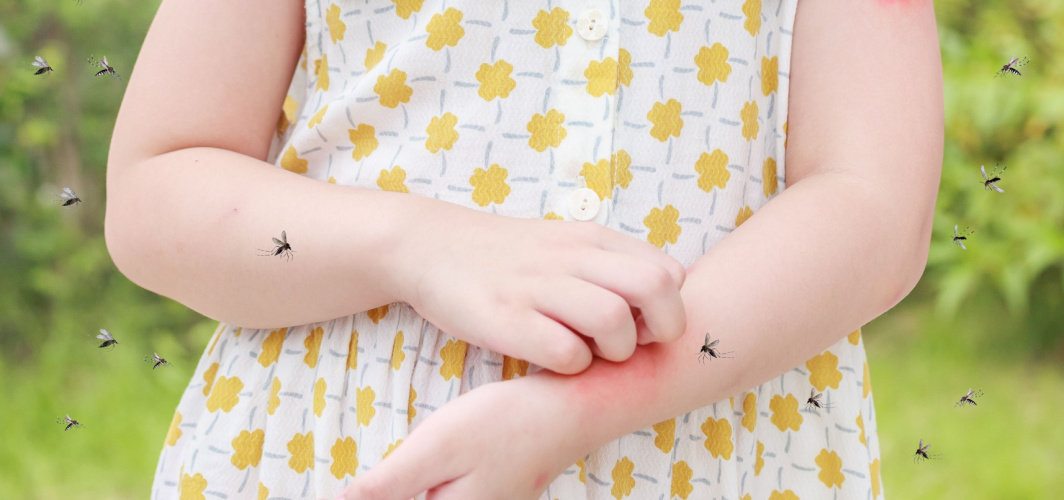- Home
- Blog
- General Health
Malaria: Symptoms, Cause, Diagnosis, Treatment, Prevention
General Health
Malaria: Symptoms, Cause, Diagnosis, Treatment, Prevention
By Apollo Pharmacy, Published on- 19 July 2023, Updated on -22 August 2024
Share this article
0
0 like

Malaria is a disease caused by parasites that are transmitted to humans via female mosquitoes infected by the parasite. It is characterised by symptoms such as fever, chills, headache, muscle aches, and fatigue.
Malaria remains a significant public health concern in many parts of India, especially in rural areas. According to a World Health Organization Report of 2021, India contributed 1.7% of malaria cases and 1.2% of deaths globally.
In this article, we will delve into the symptoms, causes, diagnosis, treatment, and prevention to protect yourself and your loved ones from this debilitating disease.
Symptoms of Malaria
Some common symptoms of malaria include:
- High fever
- Chills and shivering
- Sweating
- Headaches
- Nausea and vomiting
- Muscle aches and fatigue
The severity of malaria symptoms can vary. Mild symptoms may resemble those of the flu, while severe ones can lead to organ failure, coma, or even death if not promptly treated. Some mild symptoms of malaria include:
- Fever with chills
- Fatigue and weakness
- Body aches
Some severe symptoms of malaria include:
- High fever (>104°F)
- Confusion or altered mental state
- Difficulty breathing
- Convulsions or seizures
If you are experiencing such signs get a malaria test done to confirm the diagnosis.
Cause of Malaria
The primary cause of malaria is the bite of an infected Anopheles mosquito. These mosquitoes carry the Plasmodium parasite, which is responsible for causing the disease.
- When an infected mosquito bites a person, it injects the parasite into their bloodstream.
- Once inside the body, the parasites travel to the liver and multiply.
- After a few days, they enter the bloodstream and attack red blood cells, causing them to burst and release more parasites.
- This cycle repeats every 48 to 72 hours, leading to the characteristic symptoms of malaria.
Types of Malaria Parasites
There are several species of malaria parasites that can infect humans, each with its own distinct characteristics:
1. Plasmodium falciparum: This species is responsible for most severe cases of malaria and can lead to organ failure and death if not promptly treated.
2. Plasmodium vivax: This species is less severe but can cause recurring bouts of illness over a period of several years if left untreated.
3. Plasmodium malariae: This species causes a milder form of malaria but can persist in the body for many years, leading to long-term health complications.
4. Plasmodium ovale: This species is rare and causes a similar form of malaria to P. vivax.
Diagnosis of Malaria
Early and accurate diagnosis of malaria is essential to initiate appropriate treatment promptly. There are several methods available to diagnose this infectious disease accurately:
1. Clinical examination and medical history
The healthcare provider will assess your symptoms, such as fever, chills, headache, and body aches, along with your medical history. This information helps in narrowing down the potential cause of your illness.
2. Laboratory tests for malaria diagnosis
- Blood smear microscopy: This is the gold standard test method for malaria diagnosis. A small sample of your blood is examined under a microscope to identify the presence of malaria parasites. This test provides information about the species of malaria parasite and the stage of infection.
- Rapid diagnostic tests (RDTs): These tests are quick and easy to perform, providing results within 15-20 minutes. RDTs detect specific antigens or proteins produced by the malaria parasites in your blood. While they are not as accurate as microscopy, RDTs are useful in settings with limited laboratory facilities.
- Molecular techniques (PCR): Polymerase chain reaction (PCR) is a highly sensitive technique that detects the genetic material (DNA or RNA) of malaria parasites. PCR can identify even low levels of parasites and differentiate between different species.
By identifying the type of malaria parasite causing the infection, healthcare providers can choose appropriate antimalarial drugs for effective treatment.
Treatment of Malaria
1. Antimalarial medications
To effectively treat malaria, antimalarial medications are prescribed. The choice of medication depends on factors such as the severity of the infection and the specific parasite species involved.
I. Artemisinin-based combination therapies (ACTs)
Artemisinin-based combination therapies (ACTs) are the recommended first-line treatment for uncomplicated malaria. These drugs help to quickly reduce symptoms and clear the parasites from the bloodstream.
II. Other antimalarial drugs based on the parasite species
In some cases, other antimalarial drugs may be prescribed based on the parasite species involved. For example, chloroquine may be used for treating infections caused by chloroquine-sensitive parasites.
2. Management of Severe Malaria Cases
I. Hospitalisation and intensive care
To effectively manage severe cases of malaria, hospitalisation and intensive care are necessary. This allows close monitoring of vital signs and prompt medical intervention if complications arise.
II. Intravenous antimalarial medications
When a patient presents with severe malaria, it is crucial to initiate treatment as soon as possible. Intravenous antimalarial medications are often used in these cases, as they provide rapid and effective control of the parasite.
Here are some key points to note about Intravenous antimalarial medications:
- The choice of medication depends on factors such as the severity of the illness, drug availability, and local guidelines. However, artesunate or quinine are the golden standard drugs for treating severe malaria.
- These medications work by killing the parasites in the bloodstream and preventing further damage to vital organs.
- The medications are administered under close medical supervision in a hospital setting.
- In addition to antimalarial treatment, supportive care is essential, including fluid resuscitation, management of complications, and monitoring of vital signs.
Prevention of Malaria
Malaria is a preventable disease, and taking the necessary precautions can significantly reduce the risk of infection. Here are some personal protective measures you can take to prevent mosquito bites and ultimately prevent malaria:
1. Using insect repellents
Use insect repellents containing DEET (N, N-diethyl-meta-toluamide) or picaridin on exposed skin to repel mosquitoes. Follow the instructions on the product label. Do not apply the repellents around the mouth and eyes.
2. Wearing long-sleeved clothing and pants
Covering your body with long-sleeved shirts, long pants, and socks can provide an additional layer of protection against mosquito bites. Light-colored clothing may also help as mosquitoes are attracted to dark colors.
3. Using mosquito nets and screens
Sleeping under insecticide-treated mosquito nets during the night can protect you from mosquito bites while you sleep. Ensure that there are no holes or tears in the nets. Additionally, use window screens or mesh to prevent mosquitoes from entering your home.
Government Initiatives and Programs for Malaria Control in India
Prevention is key in controlling malaria. In India, the government has implemented various initiatives and programs to tackle this public health issue. These include:
- Indoor residual spraying (IRS): This involves spraying insecticides on the walls and ceilings of houses to kill mosquitoes that come into contact with them.
- Insecticide-treated bed nets (ITNs): These nets are treated with insecticides that repel or kill mosquitoes, providing protection during sleep.
- Larviciding: It involves treating stagnant water sources with larvicides to kill mosquito larvae before they mature into adults.
- Providing education: Educating communities about preventive measures like wearing protective clothing and using mosquito repellents.
- Chemoprophylaxis: For individuals travelling to malaria-endemic areas, chemoprophylaxis (preventive medication) is recommended. This involves taking antimalarial medications before, during, and after travel to prevent infection.
Takeaway
In conclusion, malaria is a disease caused by parasites transmitted to humans through the bite of infected mosquitoes. Early diagnosis is crucial for timely treatment and to prevent complications associated with the disease. Preventing malaria primarily involves taking measures to avoid mosquito bites using insect repellents, wearing protective clothing, and sleeping under mosquito nets. By working together and practising preventive measures consistently, we can work towards eradicating malaria from our country.
To protect yourself from mosquitoes, Explore Insect Repellents
Medically reviewed by Dr Sonia Bhatt.
Services
General Health
Frequently asked questions
It can take anywhere from 7 to 30 days for malaria symptoms to appear after being bitten by an infected mosquito.
No, malaria cannot be transmitted directly from person to person. It requires the bite of an infected mosquito
Treatment for malaria typically involves antimalarial medications prescribed by healthcare professionals. The choice of medication depends on factors such as the type of malaria parasite and the severity of the infection.
Currently, there is no licensed vaccine available for malaria, but ongoing research shows promising results.
Malaria can be diagnosed through a blood test to detect the presence of the malaria parasite in the bloodstream. Rapid diagnostic tests are also available for quick and accurate diagnosis.
Leave Comment
Services
Recommended for you

General Health
10 Best Shampoos for Men in India
Discover the top-rated shampoos tailored specifically for Indian men in 2023. Say goodbye to hair and scalp issues and hello to healthy, lustrous hair!
.jpg?tr=q-85)
General Health
Rimover Kit: Action, Dosage, Side Effects
Rimover Kit is a medical abortion kit containing Mifepristone and Misoprostol, used for pregnancy termination. Learn about its usage, side effects, precautions, and necessary follow-ups to ensure a safe and complete abortion.

General Health
5 Reasons You Must Use Cerave Sunscreen
Discover the top 5 reasons why using Cerave sunscreen is essential for protecting your skin from harmful UV rays. From dermatologist-recommended formula to advanced broad-spectrum protection, Cerave sunscreen has you covered.
Subscribe
Sign up for our free Health Library Daily Newsletter
Get doctor-approved health tips, news, and more.

